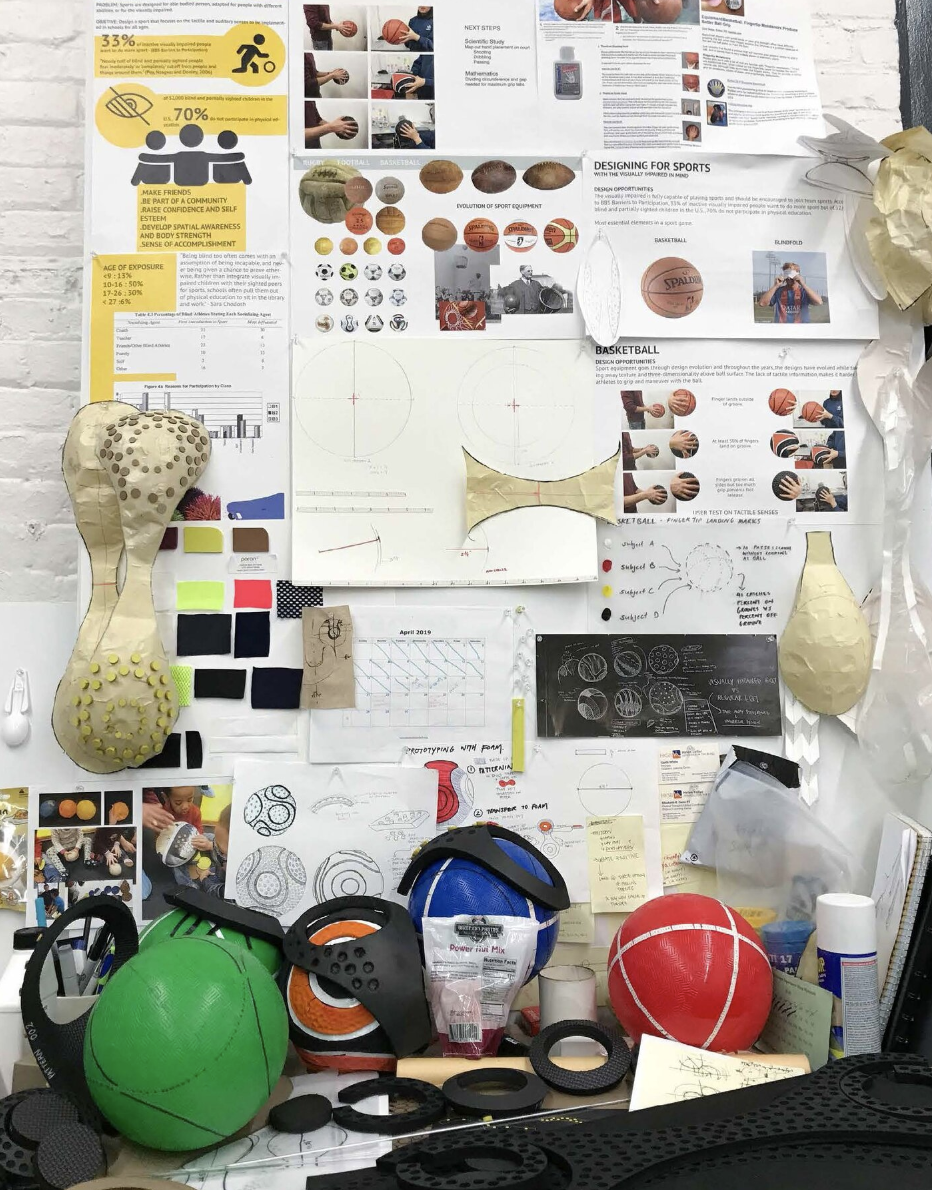AISTHESIS
A research project in collaboration with Helen Keller School for the Visually Impaired based in New York
Sports balls for kids tend to be visually exciting yet lacking in tactile stimulation. 33% of inactive visually impaired people want to do more sports, but of 52,000 blind and partially sighted children in the U.S., 70% do not participate in physical education.

"Aisthesis" is the Greek word for sense perception and is the etymological root of the English word "aesthet-ic." Derived from the Greek verb for feeling, perceiving, and sensing, "aisthesis" encompasses a much broader range of senses than its English counterpart, which is associated almost exclusively with the visual sense.
This product, Aisthesis, wants to restore the ancient sense of the Greek word to sports equipment. It pivots away from the visual to focus on tactile sensations aand thereby introduce visually impaired children to the world of sports.

The visually impaired is fully capable of playing sports and should be encouraged to join team sports. According to BBS Barriers to Participation, 33% of inactive visually impaired people want to do more sport but of 52,000 blind and partially sighted children in the U.S., 70% do not participate in physical education.

Sport equipment goes through design evolution and throughout the years, the designs have evolved while taking away texture and three-dimen-sionality above ball surface. The lack of tactile information makes it harder for athletes to grip and maneuver with the ball


Taking basketball as an examaple, it is designed to spin best on one axis where the black grooves run along one direction. When a player catches the ball, the fingers often don't land on the grooved lines, which causes slip-page. The texture also disappears very easily from the friction again the ground and once the ball is smoothened out, it becomes very hard to hold on to the ball especially without sight.

Texture and material prototypes were brought to the kids to see how they react to and with the different shapes and forms.




Working with mathematics to figure out a fitting pattern that fits perfectly on a sphere referencing football design patterns through a lot of trial and error.
Patterns also testing different eva foams for the right density. shock absorption, and bounce.



Changed patterns to close in the gaps between the EVA pieces and took down bumps by 1mm to prevent the kids from chewing and swallowing texture.
Final product tested and gifted for the visually impaired kids to play with and interact with each other while being introduced to sports from a new lens.








